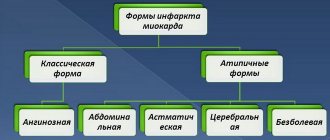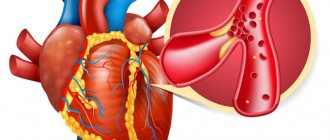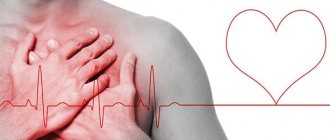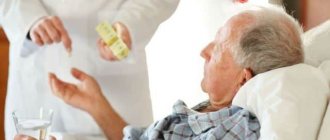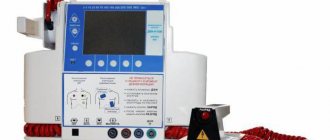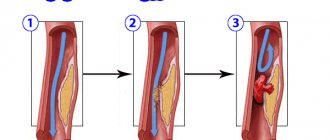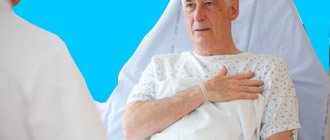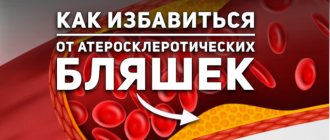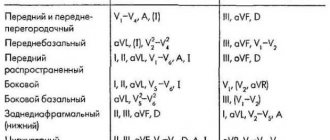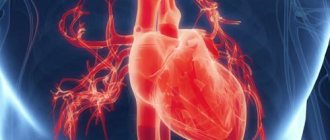Indications for use
Massage is an integral method of comprehensive recovery after a heart attack. It is prescribed for specific indications:
- convalescence phase,
- insufficiency of coronary arteries 1 and 2 degrees,
- post-infarction cardiosclerosis, hypertension,
- acute infarction with hypodynamic blood circulation,
- general condition maintained at a satisfactory level.
In addition to therapeutic massage performed by a professional massage therapist, self-massage is also useful. It is enough to do it for a couple of minutes, repeating several times a day. It is permissible to massage the neck, head, stomach and arms on your own.
After a heart attack, painful lumps can form that affect the connective tissue, the fiber under the skin. In this regard, the dynamics of such compactions is monitored during the procedure. The correct technique helps to quickly eliminate pain.
Massage helps achieve the following results:
- reduce symptoms of pain,
- improve myocardial function,
- the diameter of the lumen in the coronary vessels increases, the risks of congestion formation decrease,
- stimulation of blood flow in peripheral tissues.
The treatment significantly reduces the load on the myocardium by stimulating blood flow. Blood flows to the treated area, promoting the formation of new healthy capillaries. This increases the volume of the vascular bed, and blood pressure returns to normal.
The procedures help to relax the body, improving the patient’s mood, helping to overcome depression. Also, after a heart attack, massage allows you to prepare the blood vessels and heart for future physical activity.
https://youtu.be/0aTNXiyh6Yc
Basics of the technique
There are several specialized techniques for patients after a heart attack. The choice of method is made by the attending physician. Sometimes procedures are prescribed immediately after vital functions begin to stabilize.
In the first days after an attack, the massage is done for only 5–7 minutes, affecting only the lower limbs. As health and well-being normalize, the duration of one session can increase; the right arm is massaged, then the muscles of the back and buttocks are gradually involved.
Breast massage is acceptable provided that you start carefully - this is light stroking in the area of the chest muscles for 3 to 5 minutes. After the patient begins to sit down, the upper back and cervical-collar area are worked on. The duration of the session reaches 20 - 30 minutes.
Sessions are repeated twice a day, the full course lasts from 5 to 15 days. After each session, oxygen breathing is indicated for 15 minutes.
Basic techniques:
- stroking,
- easy kneading,
- trituration.
Dispensary and polyclinic stage
At this stage, patients are individuals suffering from chronic ischemic heart disease with post-infarction cardiosclerosis. Main tasks of exercise therapy
: prevention of further development of atherosclerosis, secondary prevention of ischemic heart disease, the possibility of complete or partial withdrawal of medications, return to work. Exercise therapy is carried out in the form of long-term physical training (LPT). DFT is indicated when myocardial infarction is at least four months old in the gym using a group method or at home according to an individual program. Functional capabilities are determined using bicycle ergometry. They use therapeutic exercises, dosed walking, skiing, cycling, etc. throughout the patient’s life.
Massage for myocardial infarction
The timing of the start of massage is strictly individual. With a generally satisfactory condition, normal temperature and positive dynamics of clinical indicators, a suction massage of the legs, a light massage of the back (on the right side), and arms are used for 3 to 10 minutes daily. If the condition is satisfactory, there are no negative dynamics on the ECG and no severe complications (pulmonary edema and infarction, gastrointestinal bleeding), V. I. Dubrovsky recommends massage
from the first days of the disease in combination with
oxygen therapy
. Massage the back (in IP lying on the right side), using stroking, rubbing, shallow kneading, the abdomen, lower and upper limbs; the chest is stroked. The duration of the massage is 5-20 minutes, after which the patient breathes oxygen for 10-15 minutes. After discharge from the hospital, a general massage is performed in a sitting position with the head supported or lying down. Begin the massage from the back and collar area. When massaging the anterior chest wall, emphasis is placed on the left pectoral muscle and sternum. The duration of the procedure is 10-20 minutes (under the supervision of a doctor).
Read also: Providing assistance during myocardial infarction
Execution technique
The technique will depend on the stage of recovery:
- Maintain strict bed rest.
There is no massage. As the indicators normalize, stroking the limbs with light pressure is allowed. The massage therapist's movements are smooth and slow.
- Light bed rest.
The patient's well-being continues to improve. You are allowed to take a semi-lying position, then sit in bed for several minutes without lowering your legs.
During sessions, light rubbing is added to the stroking; gradually, as positive dynamics develop, the force of pressure increases.
- Ward mode.
You are allowed to sit with your legs down from the bed and move to a chair. Gradually, it is acceptable to stand near the bed or walk around the room only under the supervision of a nurse.
The massage becomes deeper and more energetic. The technique of kneading and shaking is added. It is permissible to massage in the area of the left shoulder blade, at first simply by stroking, gradually complicating the effect.
- Free mode.
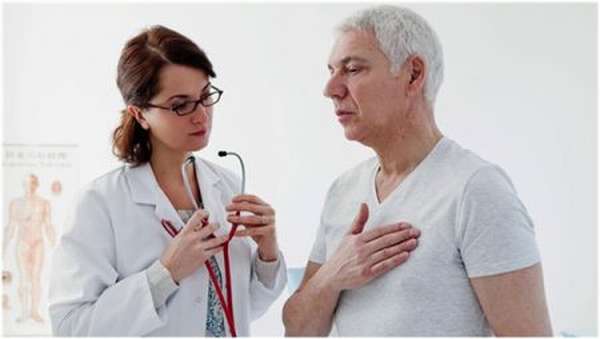
The patient is transferred to this mode in case of noticeable progress in recovery, returning to the ability to sit and walk freely.
The upper back and back of the neck are massaged. Techniques of stroking, rubbing, sawing, flat stroking, etc. are used.
Massage, which is implemented after a heart attack, helps a person begin rehabilitation and return to normal life. It is supplemented with other physiotherapy treatments according to the condition. The specialist must follow the massage technique, taking into account the stage of rehabilitation and the recommendations of the attending physician. During the organization of sessions and the inclusion of new techniques, the health and general well-being of the patient is necessarily monitored, and the body’s reaction is taken into account.
Source:
"Therapeutic massage"
.
Textbook for universities. Author:
Professor A.A.
Biryukov; Ed.
"Academy", 2004.
Massage after myocardial infarction - can it be done, video, purpose, at a stationary stage
The human heart, like any other organ, needs oxygen. The delivery of oxygen to the heart muscle is ensured by an extensive network of arterial vessels called coronary or coronary arteries.
If any pathology affects the blood vessels, which ultimately leads to insufficient oxygen supply to the heart muscle, first hypoxia develops, and then tissue necrosis, which is called myocardial infarction.
Today, this disease develops not only in older people, but also in fairly young people.
- All information on the site is for informational purposes only and is NOT a guide to action!
- can give you an ACCURATE DIAGNOSIS !
- We kindly ask you NOT to self-medicate, but to make an appointment with a specialist !
- Health to you and your loved ones!
Heart attacks are less common among the female population, but in the male half, mortality from this pathology has increased by 20% over the past two decades.
Relatives of patients, encountering doctor’s prescriptions for the first time, naturally wonder whether it is possible to do massage after a myocardial infarction and, if so, how to do it correctly.
Massage after myocardial infarction depending on the mode
To provide the patient with the smoothest transition from bed rest to movement, doctors use four main steps. Naturally, each of the steps is subject to adjustment if the patient’s condition allows or does not allow certain actions.
| Strict bed rest |
|
| Light bed rest | This mode is divided into three small stages:
|
| Ward regime |
|
| Free mode | This stage differs from others in that it allows massage not only in a lying position, but also in a sitting position of the patient. In this case, the back is massaged, or rather its upper part, the collar area. The following types of movements are used:
|
Methodology according to Dubrovsky V.I.
Massage, as doctors have long established, has a positive effect on the general condition of a patient who has suffered a myocardial infarction.
Dubrovsky was the first to propose combining massage and oxygen therapy. In this case, massage techniques stimulated blood circulation, and oxygen therapy saturated the blood with oxygen.
The essence of this technique is that after a massage session, the patient is asked to breathe oxygen through a special mask.
With this technique, almost the entire body of the patient is subjected to massage, and the duration of the procedure is determined by the patient’s condition and ECG indicators. On average, the massage lasts no more than a quarter of an hour.
An important condition for performing this type of massage is massaging the patient’s back with the patient positioned on the right side.
MASSAGE FOR DISEASES OF THE CARDIOVASCULAR SYSTEM [edit | edit code ]
For diseases of the cardiovascular system, massage aims to normalize the functional state of the nervous, vascular and sympathetic-adrenal systems, eliminate congestion and improve blood circulation in the small and large circles, activate metabolism and trophic processes in tissues, etc.
For patients with cardiovascular diseases, massage is an important means of therapy in combination with a motor regimen (passive, active and other movements). Massage helps prepare the neuromuscular system and cardiovascular system for physical activity and more quickly relieve fatigue after it. He actively promotes medical rehabilitation of patients with cardiovascular diseases and prepares them for physical exercise. Under the influence of massage, in patients with diseases of the circulatory system, the indicators of the oscillographic curve, which characterizes the state of vascular tone and blood pressure, change.
Thanks to the massage, peripheral vessels moderately dilate, the work of the left atrium and left ventricle is facilitated, and the pumping ability of the heart is enhanced. Massage of the chest enhances its suction effect, eliminates hemo- and lymphostasis of organs and tissues. Impulses entering the central nervous system from reflexogenic zones play a certain role in the self-regulation of blood circulation and have a humoral effect on its central parts and on the chemoreceptors of the cardiovascular system.
Metabolic products formed in tissues under the influence of massage also help to enhance the activity of the cardiovascular system.
Thanks to the increased blood flow that occurs under the influence of massage, it is possible to equalize and maintain a constant body temperature. Massage promotes a more active supply of oxygen and nutrients to the body and, at the same time, a more rapid removal of decay products from the body, eliminating stagnation not only in the massaged area, but also in areas located above or below it. This is important especially in cases where it is not possible to directly influence the injured area of the body. With the help of massage, you can directly or indirectly, using certain reflex connections, influence internal organs.
Massage is extremely important, influencing the entire body as a whole, especially in bed rest. For example, after a massage, the number of capillaries in 1 mm2 of muscle cross-section increases from 31 to 1400, and the total capillary capacity increases by 140 times or more. Thus, using a rational massage session technique, you can control blood pressure and alleviate the patient’s condition.
Massage improves the contractile function of the myocardium, increases the stroke and minute volume of blood, reducing peripheral vascular resistance, increases blood supply to peripheral vessels, and helps to economize the work of the heart.
